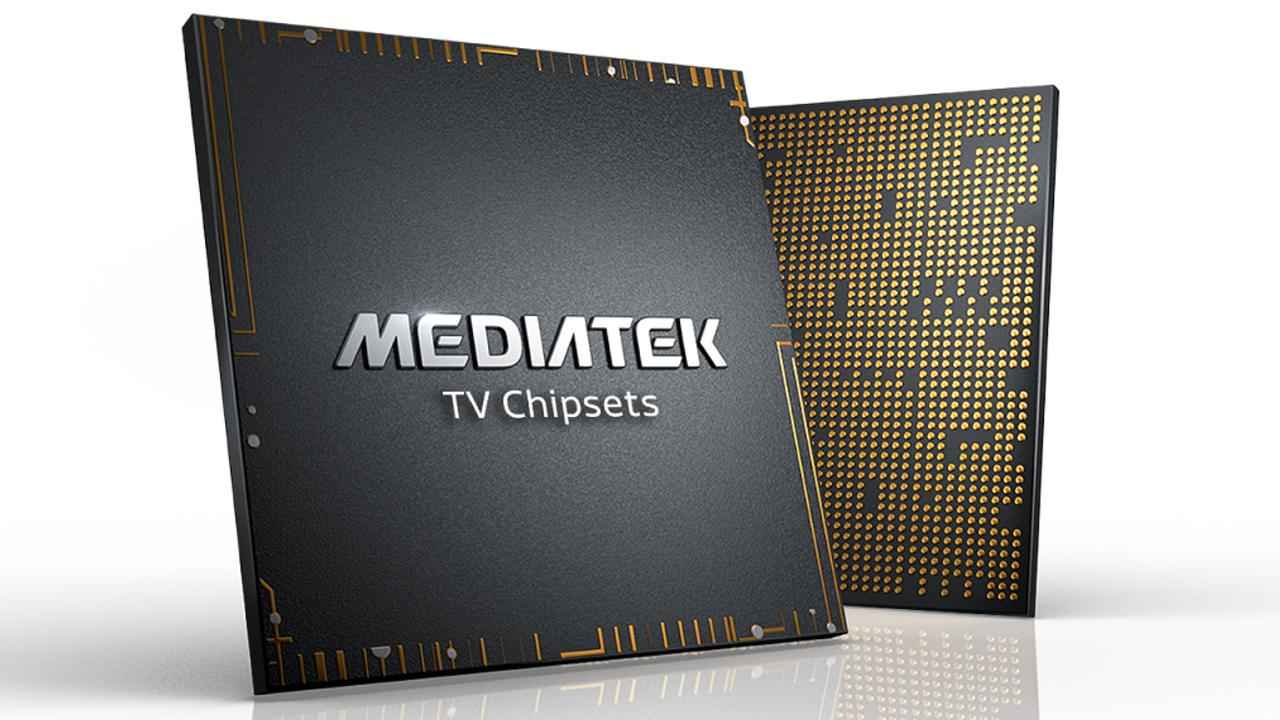

Like smartphones, TVs are powered by chipsets to ensure the picture quality and UI run smoothly. While most brands market their TV display technology or underlying tech to enhance the picture quality, the SoC ensures everything is running smoothly on the TV. MediaTek may be second place when it comes to smartphone chipsets, but it does have a relatively large market share for TVs chipsets. Today the company has announced a new chipset for 4K TVs – the MediaTek MT9638. The chipset will power 4K TVs, and also supports Dolby Vision, Dolby Atmos, HDR 10+ and HDMI 2.1.
“As smart home appliances become more intelligent and diversified, smart TVs are becoming the new hub for the smart home as consumers take advantage of AI-enabled multimedia features to control all their devices right from their TV,” said Alex Chen, General Manager of the TV Business Unit at MediaTek. “The new MT9638 continues our legacy as the No. 1 chip provider of smart TVs, bringing consumers incredible AI, multimedia, gaming and entertainment experiences in theater-quality 4K.”
The MediaTek MT9638 has multiple ARM Cortex-A55 CPU, ARM Mali-G52 GPU and dedicated MediaTek APU integrated into a single chip. The chip can power TVs with a 4K resolution with a 60Hz refresh rate. So, it looks like this chip will not be the heart of any upcoming 120Hz TVs. Interestingly, the SoC supports HDR 10+, which means we can expect more TVs to support the standard. It can also power TVs with full-array backlight with local dimming sporting more than 2000 zones. It will be interesting to see more TVs in the affordable space offering local dimming.
The MediaTek MT9638 will also support Dolby Atmos and DTS: Virtual X surround sound technologies for users. It will also support HDMI 2.1, making it a great option for gamers. However, it isn't clear how many ports on the TVs powered by this chipset will be HDMI 2.1 enabled. With HDMI 2.1, users can expect VRR (Variable Refresh Rate) and ALLM (Auto Low Latency Mode). While VRR will make a difference for games with screen tearing, it remains to be seen how much of a difference it makes on a 60Hz display as the feature is better suited for displays with a higher refresh rate. Nonetheless, between the PS5 (review) and the Xbox Series X (review), only the latter supports VRR out of the box. The PS5 is expected to get VRR support via an update in the future.
Moving over to some smart capabilities, the TV chip will support up to four far-field microphones, so you can control the TV with your voice without using the remote control. We have seen this feature in action on the TCL C715 (review), but the feature worked quite slowly on that TV. Hopefully, the new chip will improve the response time, and fluidity of far-field voice commands to interact with the virtual assistant. The chipset also consumes 0.5W on standby and claims to wake the TV from its sleep state in one second. Users will be able to wake the TV from sleep using only their voice for TVs powered by the MediaTek MT9638, which is pretty cool.
The chip also claims to bring support for “cutting-edge AI-enhancement technologies such as AI super-resolution, AI picture quality and AI voice assistants, plus variable refresh rate (VRR) and MEMC (Motion Estimation and Motion Compensation)”. It will be interesting to see how the super-resolution and AI picture quality help with upscaling low-resolution content on the TV and how the picture modes enhance the viewing experience.
According to MediaTek, “the chip enables real-time content and scene recognition, automatically adjusting colour saturation, brightness, sharpness, dynamic motion compensation and smart noise reduction to improve overall image quality. MediaTek’s AI super-resolution technology, combined with the company’s MEMC technology, intelligently upscales resolution through multi-frame blending to deliver clearer images at the smart TV’s native resolution”. Once again, we will be able to comment on this once we have a TV powered by this chipset for review. But on paper, it looks like we can expect TVs powered by this chip to offer a dynamic colour pallet and crisp resolution. But then again, things like panel used and colour accuracy plays a vital role in aiding the chip to deliver a better colour and viewing experience.
The MediaTek MT 9638 also supports Wi-Fi 6. While there are many Wi-Fi 6 enabled routers available in the market, the only consumer device we have used that has Wi-Fi 6 is the PS5. It’s nice to see Wi-Fi 6 getting more support, especially in TVs where bandwidth is key to high-resolution stream content.
According to the press release, “MT9638-powered 4K smart TVs are expected to reach the consumer market in Q2 2021”. So, we will have to wait for some time before we can get our hands on TVs powered by the new chipset.